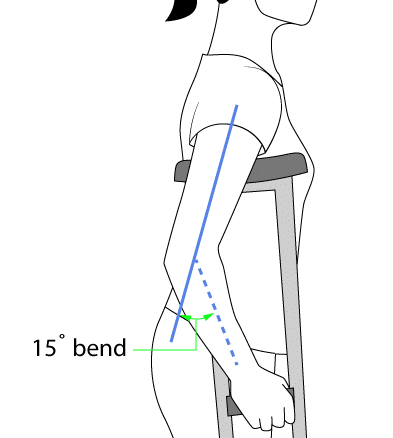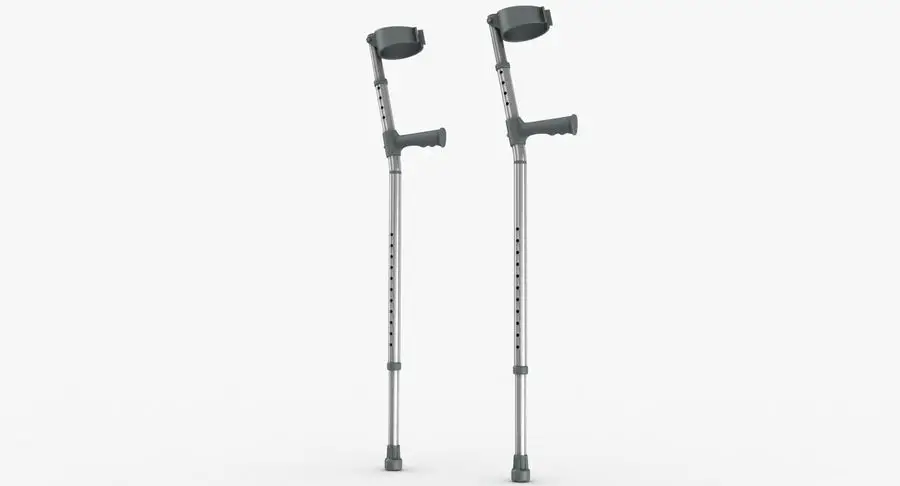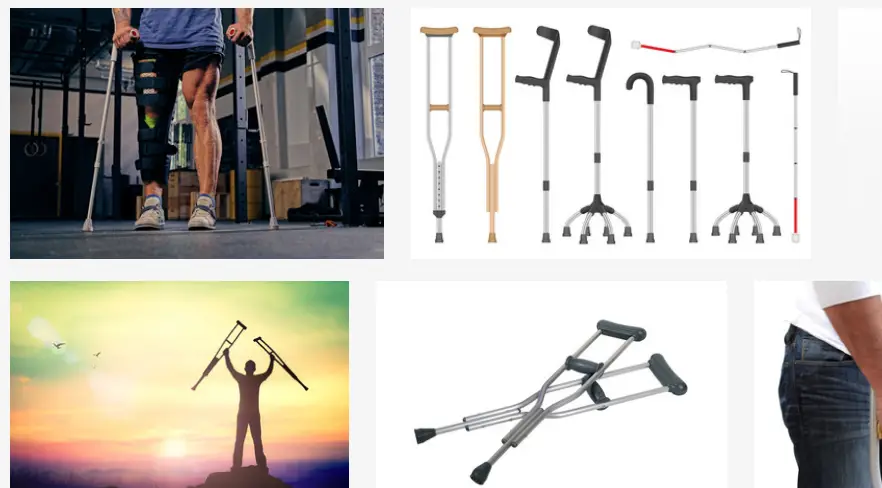Using the right crutches for your disability is important to make walking comfortable.
You don’t have to spend a fortune to get the right size that fits you perfectly. You can measure crutches in the four walls of your room.
It only takes a little knowledge of measuring crutches plus the right instrument (measuring tape) to carry out the job.
Stick with me here and I will show you how to measure crutches like a pro. It’s easy as a duck soup.
Table of Contents
- Auxiliary Crutches
- Forearm Crutches
- Gutter Crutches
- Why Should You Measure Crutches?
- Basic Components of Crutches
- Things to Note
Auxiliary Crutches
Auxiliary Crutches are made from wood or metals. They are the simplest crutches you will find. The crutches are not the best choice for people with severe walking impairments. People recovering from surgery or an injury find these crutches a great fit.
Auxiliary crutches are usually used for 2-3 months by people with temporary disabilities where one leg cannot support the other. These crutches are lightweight and come with a handpiece, an auxiliary bar, screws, and wing bolts for height variations.
As if that’s not enough, they provide lateral stability and balance, especially when descending and ascending on a staircase. The approximate adjustable height for auxiliary crutches ranges from 12-153cm.
Related: How to Carry Things with Crutches Seamlessly
How to measure auxiliary crutches

You can measure auxiliary crutches with your shoes on and off. Although, I recommend you remove your shoes to get the best result. The measurements you get when you use the without shoe method are reliable and efficient.
Remove your shoes and measure from the apex of the axilla to the lower margin of media malleolus in a lying position. Use an inch tape for the measurement.
If you decide to measure with your shoes on, start your measurement from 5cm vertically down the apex of the axilla to 20cm lateral of the heels of your shoe.
Take a point 2 inches below the axilla and 6 inches anterior and 2 inches lateral to your foot in a standing position. Your shoulders should be relaxed while allowing 20-30° elbow flexion to the handpiece.
You can also take your measurement using the auxiliary pad and handgrip distance. Here’s what to do. Flex your right elbow at 15°, then locate a point 5cm below the apex of the axilla. Measure from there to the ulnar styloid. Do the same for your left elbow for an accurate result.
Forearm Crutches
First, let’s get one drawback from the way; the forearm crutches are a bit pricey and provide less lateral support compared to the auxiliary crutches. Yet, they’re a great choice of mobility aid and more flexible than the auxiliary crutches. They’re made of aluminum and have more cosmetics functions.
The best part about these crutches is that they are easily adjustable, even though the cuffs may be hard to remove. The height is adjustable from 74-89 cm.
Thanks to their push-button mechanism, the forearm crutches make stairs climbing a breeze.
How to measure forearm crutches
In a lying position with your shoes on, flex your left elbow to 15° and measure the ulnar styloid process to 20cm lateral to the heels of your shoe. Repeat this process for your right elbow to confirm accurate measurements.
In a standing position, relax your shoulders to get 20-30° elbow extension. Then, measure 6 inches anterior and 2 inches lateral to your feet. Don’t forget to wear your shoes to get an accurate result.
Gutter Crutches
Other commonly-known crutches are the gutter crutches used by people with deformities needing support but unable to take weight through their forearms, elbow, and hands. These crutches are made with metal and are easy to adjust.
For a gutter crutch, the adjustable height depends on the patient’s needs.
Related: How to Easily Make Your Crutches More Comfortable (DIY Guide)
How to measure gutter crutches
Start by putting on your shoes and get in a comfortable lying position. Then, measure from the point of fixed elbow to 20 cm lateral to the heels of your shoe.
Why Should You Measure Crutches?

Crutches are designed to help you move around easily, but they could cause you pain and discomfort if not properly used. Walking with too tall or short crutches can endanger your life and cause severe pains.
Too tall crutches
Too tall crutches will dig into your armpits, damage the nerves, and cause crutch paralysis. I am pretty sure you don’t want to add that to your walking disability. This is one reason you should measure crutches and use the right crutch height.
Too short crutches
On the other hand, too short crutches can cause you to trip and injure yourself. Using too short crutches will make you uncomfortable and increase your chances of getting injured.
Try to steer clear of walking with too short crutches as much as possible. It will only put you at risk.
Related: How to Walk with Your Crutches Without Getting Tired
Basic Components of Crutches
This section will guide you to understand the parts of crutches as well as the places to note for measuring crutches.
Crutch pad
A crutch pad helps reduce the pain and pressure put on your underarms and hands when using crutches. It helps make you comfortable and confident when walking with crutches. There are tons of crutch pads on the market. They are available in various colors, patterns, and sizes.
Handgrip
The handgrip is an important feature of a crutch; It influences your comfortability. Make sure to prioritize buying a crutch with a durable and comfortable handgrip.
Things to Note
Axilla
This is the region where your arm connects to your shoulder. To get the best result, take your measurement from the apex of your axilla, that is, the peak of the axilla.
Ulnar styloid process
The Ulnar styloid process is the bony projection at the end of your ulnar. This feature greatly affects the flexibility and strength of your forearm and wrist.
Media malleolus
This is the bump protruding on the inner side of your ankle. Experts say it is the largest among the 3 bone segments that form the ankle. So, the media malleolus is not a separate bone but the end of your ankle bone.




